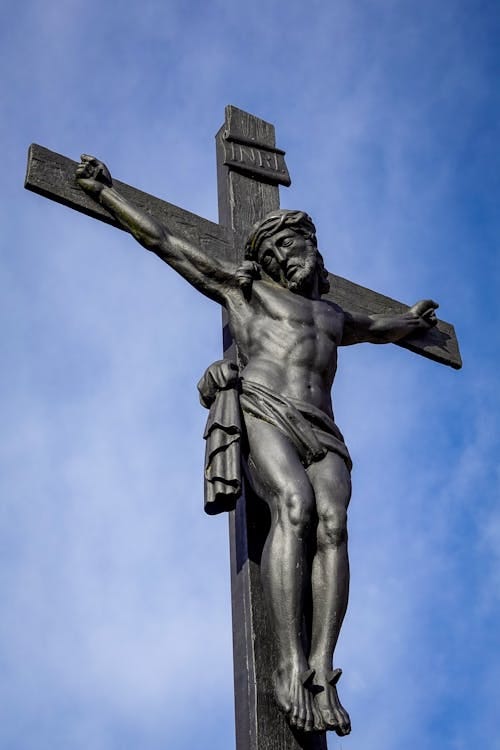When Redemption Became Bread
As promised, as I’ve been studying Messianic Jewish theology, I’ve come across more Hebrew words and concepts I wanted to share with you.
In Christianity, we say the blood of Christ has redeemed us.
What does that mean, and why is there blood involved?
To understand, we have to visit the Tanakh (תנ״ך), or the Old Testament.
In Judaism, the high priest would sacrifice animals to atone for the people’s sins.
In the days of the Temple, only the high priest could enter the Holy of Holies—and only once a year, on Yom Kippur, the Day of Atonement.
He would first offer sacrifices for his own sins, then for the people’s sins.
The blood from those offerings was sprinkled on the mercy seat above the Ark of the Covenant, symbolizing the exchange of life for life.
Why blood?
Because in Torah it says, “The life of the flesh is in the blood, and I have given it to you upon the altar to make atonement for your souls” (Leviticus 17:11). Life is sacred, and when sin breaks the covenant between humanity and God, life—represented by blood—is the price of restoration.
Every sacrifice was a picture pointing forward, a shadow of something greater.
The high priest had to repeat the ritual year after year because the covering was temporary.
But when Yeshua offered Himself, He entered the true Holy of Holies once for all—not with the blood of goats and calves, but with His own blood, obtaining eternal redemption (Hebrews 9:12).
There’s a Hebrew word known as Ga’al (גָּאַל).
It means “to redeem,” but that definition barely scratches the surface.
In Scripture, it’s what a go’el does—the kinsman who steps in when all seems lost, who buys back what was taken, who restores a name, a home, a future.
That’s what makes Ga’al so powerful. It isn’t just ancient ritual; it’s the story of God stepping in as our Go’el—our kinsman-redeemer—taking our place, restoring what was lost, and making the way back to wholeness.
I’ve lived this word.
Not in theory, but in the way God pulled me from despair, rebuilt what was broken, and whispered, You are still mine.
Ga’al isn’t just a word; it’s the thread running through my story—from the pit to the promise, from shame to shalom.
There have been a few times in my life when I’ve been redeemed.
I live with a chronic condition known as Schizoaffective Disorder, Bipolar Type.
It’s in remission now, but there have been seasons where the illness overtook me.
One of those seasons was in Virginia, during the summer of 2019. I experienced a manic and psychotic episode that required hospitalization.
While I was there, I was assaulted several times, to the point of losing a front tooth.
My good friend and mentor at the time, Chris Gerhardt, became my Go’el. He literally redeemed and interceded on my behalf, convincing the hospital to release me into his care.
When I was released, I was disoriented and didn’t trust anyone. I had little money and became reclusive.
Chris nursed me back to a stable mindset and opened his home to me. When I was ready to return to Connecticut, he gave me $3,000 to help me start over.
He didn’t just act to redeem me—he helped restore me.
In that season, I learned that redemption isn’t always abstract — sometimes it comes through people who embody God’s mercy in tangible ways.
But even as I healed, I began to notice something deeper: every act of redemption also carried a kind of nourishment. When I was lost, God didn’t just save me — He sustained me.
That realization led me to another word and another symbol woven throughout Scripture: bread.
It’s no coincidence that Yeshua, the Redeemer, was born in Bethlehem — Beit Lechem in Hebrew — which means House of Bread.
From the very place of His birth, God was revealing that redemption isn’t only about rescue; it’s about restoration and sustenance — about feeding what’s starving in the human soul.
In the wilderness, God fed Israel with manna — bread from heaven. It was a daily provision, but it never lasted beyond the day. It was a picture of dependence — a reminder that our survival has always come from His hand.
Generations later, Yeshua stood before a crowd and said, “I am the Bread of Life. Whoever comes to Me shall not hunger, and whoever believes in Me shall never thirst.” (John 6:35)
The same God who once provided bread from heaven was now offering Himself as the Bread — not a temporary provision, but an eternal one.
Bread in Scripture always represented life — something shared, something sacred.
In the Temple, the showbread (Lechem Panim) was kept continually before God’s presence. It symbolized fellowship, covenant, and closeness.
Yeshua fulfills that completely. He is the Bread ever before the Father — the offering that never grows stale, the presence that never leaves.
At the Last Supper, He broke bread and said, “This is My body, given for you.”
From the House of Bread to the breaking of that bread, the message was clear: God Himself would become our sustenance. Not just the One who redeems us from sin, but the One who nourishes us into life.
For me, this truth is personal. I’ve known hunger — not just physical, but spiritual. I’ve known what it means to starve for peace, for clarity, for purpose.
And yet, in every famine of the soul, God met me with bread.
He met me in hospitals, in silence, in prayer — in every place where I thought I had nothing left.
That’s what the Bread of Life does. He doesn’t just save you once; He feeds you daily.
He is both the Ga’al who redeems and the Lechem who sustains.
I hope this was a good lesson in Hebrew thought.
I’ll continue my journey and share it with you.
Shalom.


